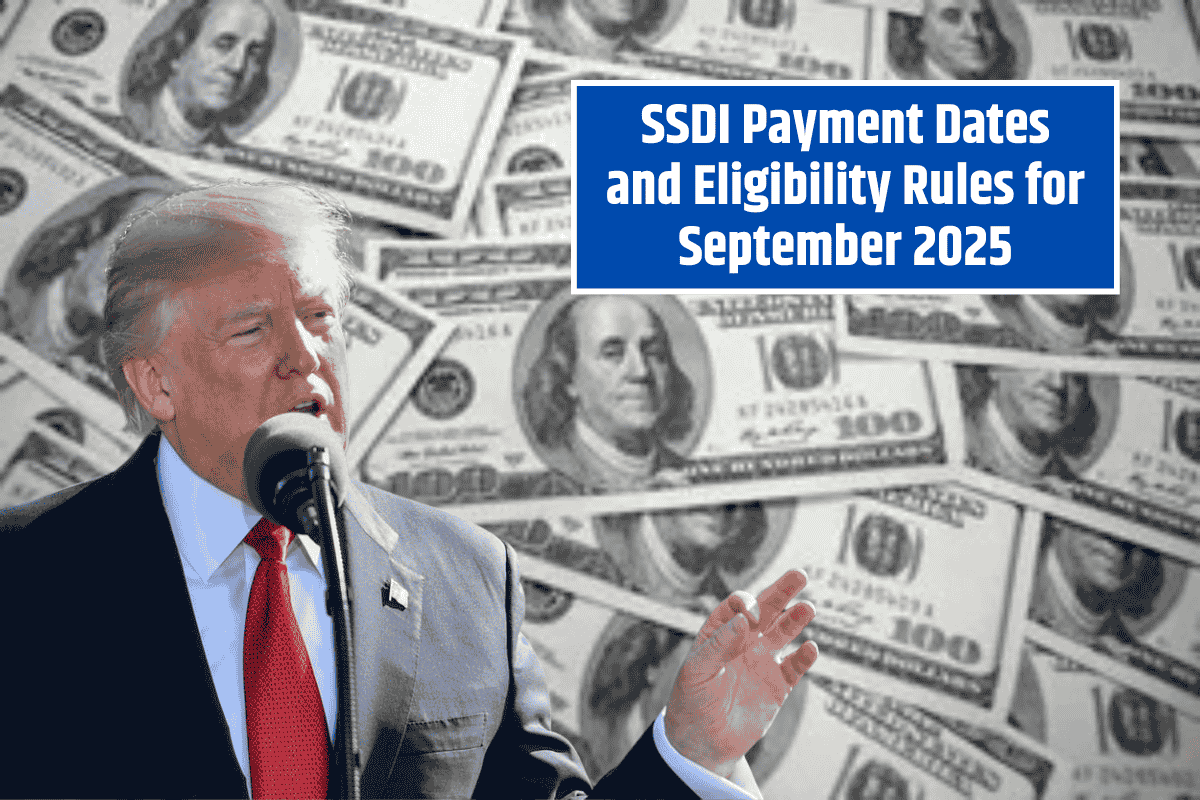If you’re receiving Social Security Disability Insurance (SSDI) or planning to apply, it’s important to stay updated on payment dates, benefit amounts, and eligibility rules.
In September 2025, the Social Security Administration (SSA) has released a fixed payment schedule based on beneficiaries’ birth dates, continuing its long-standing method of issuing benefits.
Here’s a simple breakdown of what to expect this September and what rules you need to meet if you’re applying for SSDI.
SSDI Payment Dates for September 2025
SSDI payments in September will follow the usual schedule based on the day of birth. Payments are made on Wednesdays, depending on your birthday range:
September 3, 2025 (Wednesday):
For people who receive both SSDI and Supplemental Security Income (SSI)
For those who started receiving SSDI before May 1997
September 10, 2025 (Wednesday):
If your birthday falls between the 1st and 10th of any month
September 17, 2025 (Wednesday):
If your birthday falls between the 11th and 20th
September 24, 2025 (Wednesday):
If your birthday falls between the 21st and 31st
This structured system has been in place since 1997 to help manage the large number of monthly payments.
How Much Will SSDI Benefits Be in 2025?
Benefit amounts vary based on your work history and earnings. Here’s what you can expect in September 2025:
Average monthly SSDI payment: Around $1,580 (includes a 2.5% cost-of-living adjustment)
Maximum SSDI benefit: $4,018 for those with over 35 years of high earnings
These amounts may change depending on inflation and yearly COLA updates
Eligibility Rules for SSDI
To qualify for SSDI, you must meet both non-medical (work-related) and medical criteria.
1. Non-Medical (Work Credits Requirement)
You need to have worked in jobs covered by Social Security
Must have 40 work credits (usually 10 years of work)
At least 20 credits must be earned in the last 10 years before your disability
In 2025, you must earn $1,810 to get 1 credit (max 4 credits per year)
2. Medical Requirements
You must have a physical or mental condition expected to last at least 12 months or result in death
Your condition must prevent you from doing any work that pays a livable income
SSA uses a Listing of Impairments—if your condition is on the list, you may automatically qualify
Even if not listed, you may qualify if you can prove your condition is equally disabling
The SSDI Application Process: 5-Step Review
SSA will review your case in these five steps:
- Are you currently working and earning above the limit?
- Is your medical condition severe?
- Is your condition on SSA’s list of impairments?
- Can you do the work you used to do?
- Can you do any other kind of work at all?
Income Limits for SSDI in 2025
If you are under full retirement age (67), there’s a limit on how much income you can earn while receiving SSDI:
Monthly earnings limit:
$1,550/month for most people
$2,590/month for people who are legally blind
Yearly earnings limit (if under full retirement age for all of 2025):
$23,400
SSA deducts $1 in benefits for every $2 earned over this amount
If turning full retirement age in 2025:
Higher limit: $62,160
SSA deducts $1 in benefits for every $3 earned until the month you turn 67
SSDI Payment and Eligibility Summary
| Topic | Details |
|---|---|
| SSDI September Payments | Sept 3, 10, 17, and 24 based on birthday or special cases |
| Average Benefit | Around $1,580 per month |
| Maximum Benefit | Up to $4,018 per month |
| Work Credits Needed | 40 credits total; 20 must be recent |
| Earnings per Credit | $1,810 (2025 rate) |
| Income Limit (Monthly) | $1,550 (non-blind), $2,590 (blind) |
| Income Limit (Yearly) | $23,400 (full year), $62,160 (if turning 67 in 2025) |
If you’re receiving SSDI or planning to apply, it’s essential to understand when payments are issued, how much you may receive, and what the eligibility requirements are.
With clear income limits, strict medical rules, and a structured payment system, the SSDI program continues to offer crucial support to Americans who can no longer work due to serious health conditions.
Keep track of your earnings, know your payment date, and reach out to SSA if you need help applying or managing your benefits.
